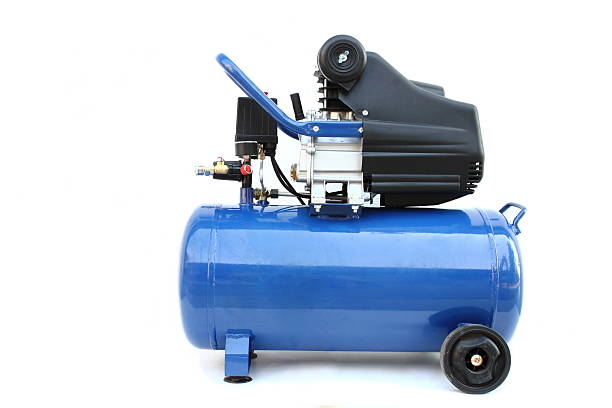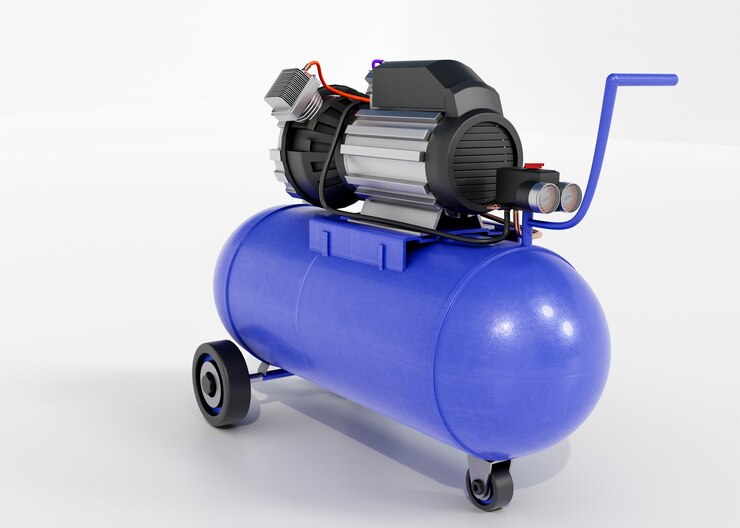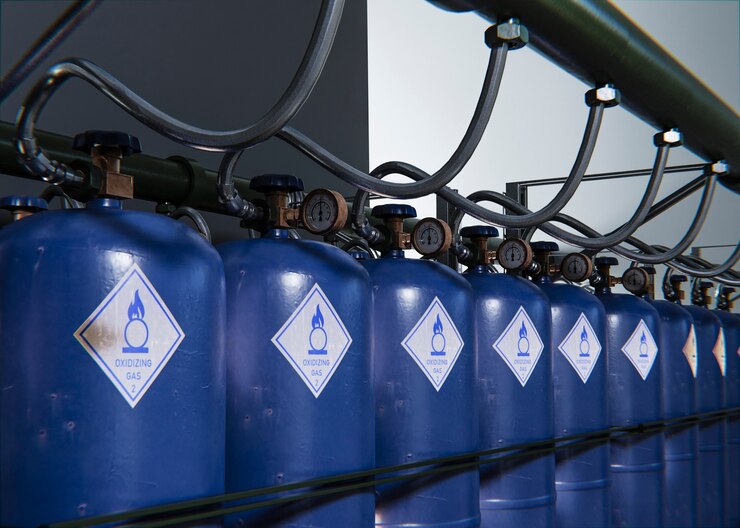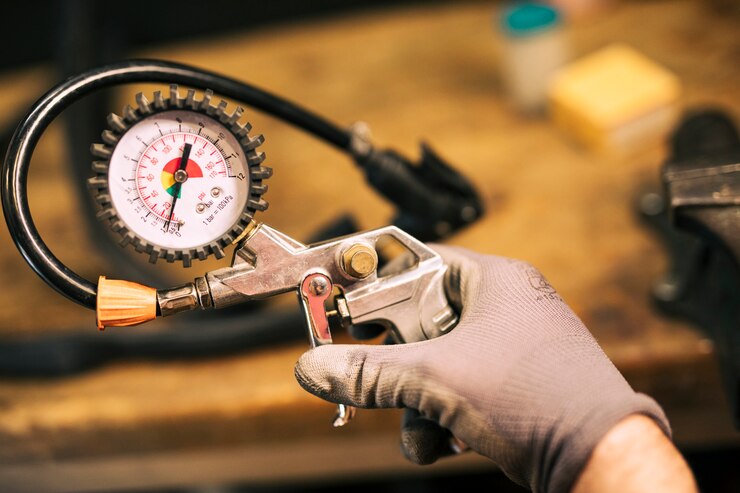Choosing the Right Air Compressor: A Step-by-Step Guide
The Ultimate Guide to Air Compressors: Powering Up Your Projects
In many homes and businesses, the humble air compressor is an unsung hero. With the compressed air burst that this multipurpose tool produces, you can power numerous pneumatic tools, inflate tyres, and even clean surfaces. But it can be confusing to choose the best air compressor because there are so many possibilities. With the help of this thorough guide, you’ll be able to choose the ideal air compressor for your requirements.
Understanding the Power of Compressed Air
An air compressor is essentially a device that draws in ambient air, compresses it to a smaller volume, and then greatly increases the pressure in it. After that, the compressed air is kept in a tank and used as needed to carry out different operations.
When working with air compressors, there are a few essential terms to comprehend:
- CFM (Cubic Feet per Minute):
The amount of air that an air compressor can supply in a minute is measured in CFM or cubic feet per minute. When using tools like paint guns or sanders, which require constant airflow, a higher CFM is required.
- PSI (Pounds per Square Inch):
Pounds per Square Inch, or PSI, is a unit of measurement for compressed air pressure. For jobs needing additional force, like hitting wrenches or driving nails, you’ll need a higher PSI.
- Capacity of Air Tank:
For continuous use, compressed air is stored in the air tank, which functions as a reservoir. Longer work times are possible with a larger tank since it eliminates the requirement for the compressor to run continuously on and off.
Types of Air Compressors: Finding the Perfect Fit
There are several configurations of air compressors, and each is appropriate for a particular need. The most prevalent kinds are broken down as follows:
- Reciprocating Air Compressor:
Known as the workhorse of this compressor industry, these units compress air using a piston-and-cylinder arrangement. They are often portable, reasonably priced, and perfect for residential garages and do-it-yourself tasks.
- Air compressors:
These compressors of industrial grade that use revolving screws to constantly compress air are known as rotary screw air compressors. They are ideal for heavy-duty applications requiring continuous airflow because of their high CFM output.
- Centrifugal Air Compressor:
The air is compressed by centrifugal force in these high-speed compressors. They are frequently utilized in expansive industrial settings and are renowned for operating quietly.
Beyond the Basics: Choosing the Right Air Compressor
Although compressing air is still the primary function of air compressor, choosing the ideal model involves more considerations than only type (such as reciprocating, rotary screw, etc.). Here’s a thorough look at some crucial factors to make sure this compressor is the ideal fit for your requirements:
- Power Source:
Often, this decision is made based on convenience. Plugging into a regular outlet, electric air compressors are easy to use and quiet, making them perfect for inside use. Gas-powered machines, on the other hand, are incredibly portable and perfect for working on outdoor projects or in locations without easy access to electricity.
- Noise Level:
Especially for residential use, this has the potential to be revolutionary. Check the specifications of the air compressor for decibel ratings. Quieter operation is indicated by lower decibel levels. For additional peace of mind, take into account noise reduction elements like sound enclosures.
- Duty Cycle:
Don’t let the mere production of raw power deceive you! The duty cycle, which is represented as a percentage, shows how long the compressor can operate without overheating. A lower duty cycle could be adequate for occasional do-it-yourself projects. However, choose a greater duty cycle for long-term professional use to prevent overheating and possible damage.
- Maintenance Requirements:
Regular oil changes are necessary for these compressors that use oil lubrication, which increases the overall upkeep. Oil-free versions may cost more, but they are more convenient. Before making a decision, assess your comfort level with upkeep.
- Air Receiver Tank Size:
Estimate the amount of compressed air you’ll require for the tasks at hand. Longer pressurized air bursts without the need for the compressor to continuously cycle on and off are made possible by larger air tanks. When using paint guns or other operations that require constant airflow, this might be quite important.

Extra elements to consider:
- Take into account elements that improve security or usability. To avoid over-pressurization, look for models that have an automated pressure shutoff feature. Condensate removal is made easier with auto-drain valves, and gauges show pressure measurements in real-time.
- Taking into account these elements in addition to the kind of air compressor will enable you to select the ideal model for your particular requirements and uses. Recall that a well-selected air compressor proves to be a dependable collaborator when handling diverse tasks, thereby saving your time and energy.
Unlocking Your Air Compressor’s Potential: An Endless Possibility
There is more to this compressor than just a loud device in the garage’s corner. It’s a multipurpose powerhouse just begging to be let go! This marvel of compressed air can change the way you approach certain jobs and save you time and effort in a variety of contexts.
- Boost Your Initiatives:
The ultimate collection of pneumatic tools: impact wrenches, sanders, spray guns, nail guns, and more! These pneumatic tools are given vitality by air compressors, which makes them ideal for do-it-yourself tasks, building jobs, and even vehicle body repairs.
- Tire Whisperer:
Eliminate the strain of using manual pumps. These compressors ensure you’re always prepared for anything by swiftly and effectively inflating tyres for cars, bikes, and even sports equipment.
- The Cleaning Crew:
The most effective weapon against sawdust, dust, and debris is a strong burst of compressed air. For a pristine workstation, blast dirt from surfaces, tools, and even difficult-to-reach nooks and crannies.
- Painting Perfection:
The foundation of any professional or do-it-yourself painting equipment is an air compressor. They drive paint guns for even, smooth application, and detail tools precisely reach those difficult-to-reach areas.
Maintaining Your Air Compressor: A Recipe for Long Life and Peak Performance
To ensure that it continues to function properly and provide steady power for many years to come, your industrious air compressor deserves regular maintenance. The following is a summary of crucial upkeep procedures to guarantee that your air compressor continues to be a trustworthy collaborator on your projects:
- Empty the Air Tank Frequently:
As the compressor runs, moisture builds up inside the air tank. If this condensation is not dealt with, it can cause corrosion and rust. Make it a practice to empty the air tank regularly, as advised by the manufacturer. You may greatly increase the lifespan of your compressor by taking this easy step.
- Maintain the Air Filter:
Your compressor and car both require a clean air filter! Clean air intake is restricted by a clogged air filter, which lowers performance and increases motor strain. As directed by the manufacturer, clean or replace the air filter regularly. In addition to ensuring ideal ventilation, this guards against internal component deterioration.
- Lubricate When Necessary:
For certain air compressors to operate correctly, oil changes or lubrication are required. To find out if your model needs to be lubricated and what kind of oil to use, refer to the owner’s manual. Maintaining a regular maintenance plan reduces heat accumulation and friction, allowing your compressor to operate cool and effectively.
Prioritizing Safety: Crucial Measures to Take While Operating Your Air Compressor
These compressors are strong instruments, and strength always comes with responsibility! By placing a high priority on safety, you may use your air compressor to its full potential without endangering anyone. The following are important safety measures to keep in mind:
- The most important thing is eye protection:
When using this compressor, always wear safety glasses. Compressed air can injure eyes by launching particles or possibly causing hose ruptures. Your eyes are shielded from injury by the crucial barrier that safety glasses provide.
- Turn Down the Volume:
Prolonged exposure to high decibel levels might harm your auditory organs. When running the compressor for prolonged periods, put on earmuffs or earplugs. This keeps your hearing safe and lets you concentrate on the work at hand.
- Recognize Your Limits:
Never use air tools or hoses above their recommended pressure rating. Excessive pressure when using compressed air can cause equipment to malfunction or even explode. Make sure the pressure ratings on your hoses and tools match your compressor’s output by checking them frequently.
- Keep it Directed:
Avoid aiming compressed air at other people or yourself. A misdirected burst of air can result in catastrophic injury. When using the compressor, always point the air nozzle in the direction of the chosen target and keep other people safe.
- Beware of Hot Surfaces:
When operating, air compressors can produce heat. After use, keep your hands off the compressor head and any other hot parts. Let the compressor cool down completely before making any repairs or modifications.
- Consider Before You Plug:
Make sure the electrical socket is correctly grounded and the power cord is clear of damage before plugging in your compressor. If you must use an extension cord, make sure its gauge rating can support the compressor’s current draw and avoid using it otherwise.
Conclusion:
With many state-of-the-art industrial processing machineries, LEIYAO Compressor creates a solid foundation for manufacturing high-end air compressor. We produce and supplying air compressors for usage in a range of industrial environments.



